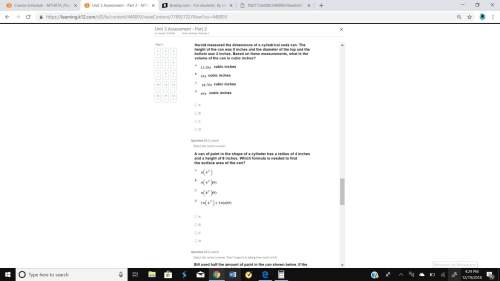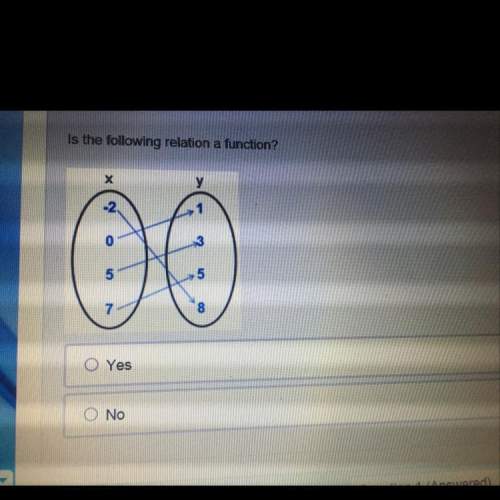Linear equation: - Ž (6x + 10) = 13
Step 1: -3x - 5 = 13
Step 2: -3x = 18
Step 3: x = -...

Mathematics, 20.09.2020 03:01 rntaran2002
Linear equation: - Ž (6x + 10) = 13
Step 1: -3x - 5 = 13
Step 2: -3x = 18
Step 3: x = -6
Which sequence describes the inverse operations used
for steps 2 and 3 to solve the linear equation?
O the addition property of equality and then the
division property of equality
the addition property of equality and then the
multiplication property of equality
the subtraction property of equality and then the
division property of equality
the subtraction property of equality and then the
multiplication property of equality

Answers: 1


Another question on Mathematics


Mathematics, 21.06.2019 16:20
What are the soultion(s) to the quadratic equation 40- x^2=0
Answers: 1

Mathematics, 21.06.2019 22:00
You're locked out of your house. the only open window is on the second floor, 25 feet above the ground. there are bushes along the edge of the house, so you will need to place the ladder 10 feet from the house. what length ladder do you need to reach the window?
Answers: 3

Mathematics, 21.06.2019 22:30
The area of a circle is equal to 1 dm². find the radius of the circle.
Answers: 1
You know the right answer?
Questions


Mathematics, 12.03.2021 20:40

Computers and Technology, 12.03.2021 20:40

Mathematics, 12.03.2021 20:40



Mathematics, 12.03.2021 20:40

Biology, 12.03.2021 20:40

Mathematics, 12.03.2021 20:40

Mathematics, 12.03.2021 20:40


Mathematics, 12.03.2021 20:40






Mathematics, 12.03.2021 20:40






